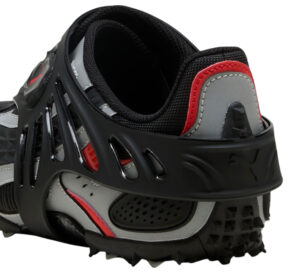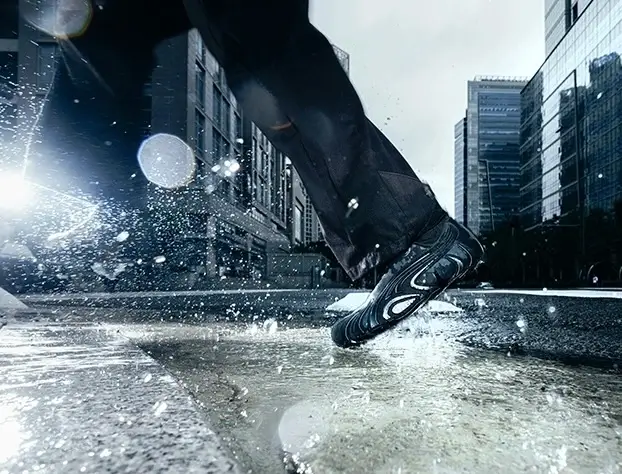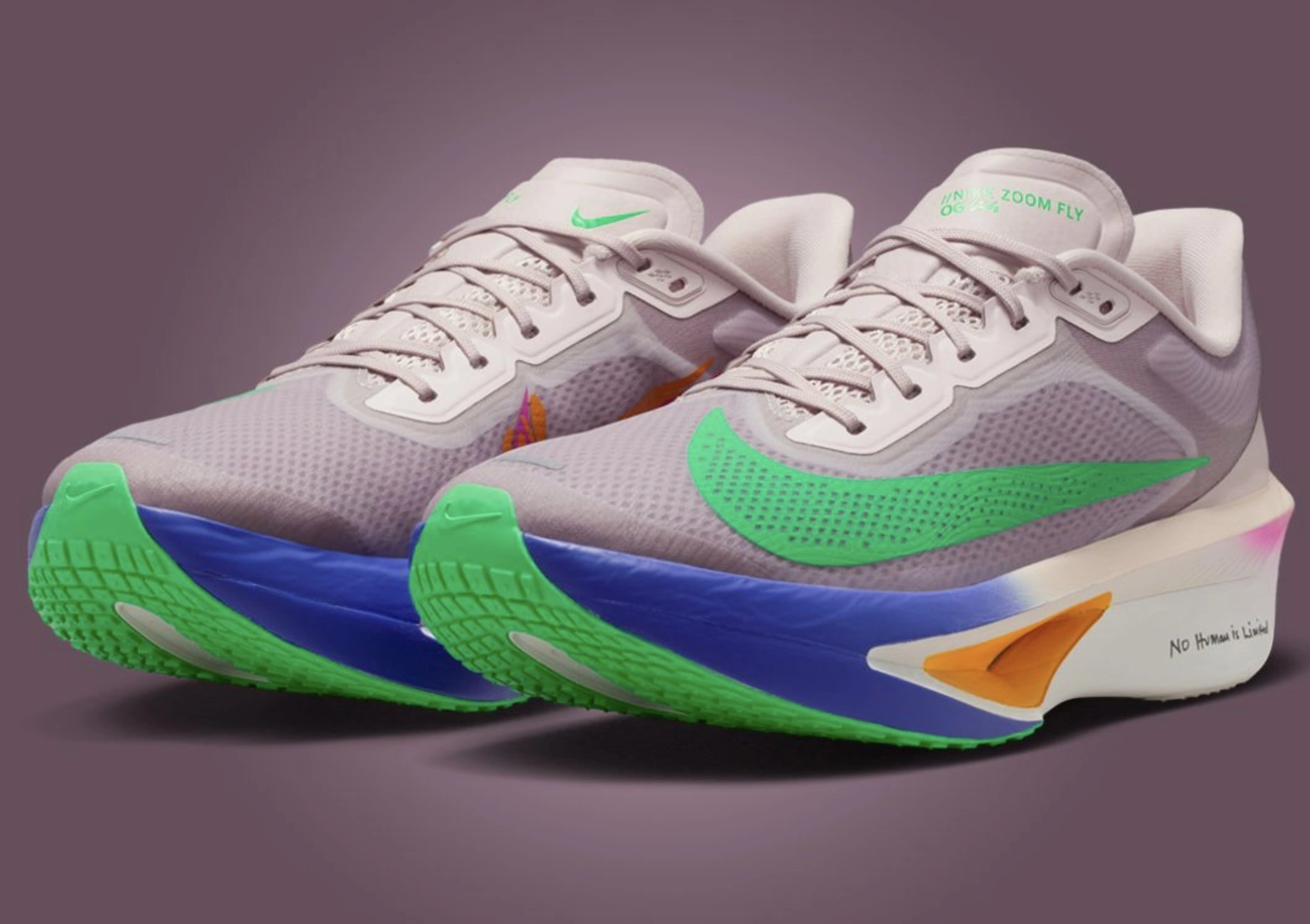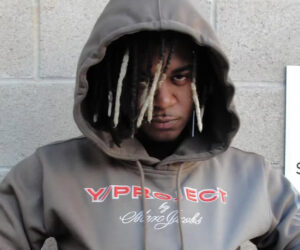In the ongoing intersection of sportswear, haute fashion, and cultural commentary, the Men’s A$AP Rocky x Puma Monstro Gabbia Light Shoe marks a compelling chapter—one that fuses hyper-modern aesthetics with the gritty futurism that defines Rocky’s creative direction. Unveiled as part of Rocky’s evolving partnership with Puma under the Formula 1 umbrella, the Monstro Gabbia Light is a conceptual reanimation of the 1990s Puma Mostro—a once-marginal silhouette reborn through his eyes not as nostalgia, but as a shape-shifting, speed-referencing, industrial object.
More than just a shoe, the Monstro Gabbia Light feels like a speculative prototype torn from the asphalt of a near-future racetrack and dropped into contemporary menswear. Every design decision—from its ribbed exoskeleton to its rubber-cage outsole—screams of kinetic restraint.
The Monstro Genealogy — From Mostro to Monstro
To understand the Monstro Gabbia Light, one must return to the Puma Mostro, launched in 1999 and named after the Italian word for “monster.” It was a leftfield innovation—fitted with a spiked wraparound sole and a neoprene upper that borrowed from track spikes and surf shoes alike. But despite its avant-garde leanings, the Mostro never quite broke into the mainstream shoe consciousness.
For Rocky, who is no stranger to stylistic reclamation, the Mostro’s cult status made it fertile ground for reinvention. He saw in it a chassis, not a relic. The Monstro Gabbia Light is thus not a retro but a rebirth—taking the sinewy, sloped silhouette of the original and exaggerating it into high-performance sculpture.
The Gabbia Light — Design As Architecture
“Gabbia” means cage in Italian, and that term is literal here. The Monstro Gabbia Light is encased in a skeletal external structure made of molded synthetic rubber—designed to echo both protective motorsport gear and animalistic carapaces. Its architectural cage serves not only aesthetic purpose but structural integrity, replacing traditional overlays with a full wrap that doubles as exosuit.
The upper, in contrast, is made from a breathable mesh underlay that reinforces its duality: vulnerability and armor. This tension is central to Rocky’s aesthetic across music, fashion, and now footwear. The shoe’s slip-on neoprene build supports barefoot-style agility, while its jagged outsole mimics both tire tread and reptilian claw.
In the men’s version, the silhouette is lower slung, sleeker at the instep, and more sculpted in the arch—anatomically responsive, it cradles the foot like a biomechanical limb extension. The Light version pares back bulk to emphasize tactility and form, favoring lighter foam and responsive flex zones over visual density.
Motorsport Meets Streetwear — A Formula 1 Filtration
The collaboration between Rocky and Puma was catalyzed by Formula 1, where Rocky was appointed creative director for Puma x F1. That partnership drives much of the Gabbia’s thematic energy. This is not just motorsport-inspired footwear—it is a translation of velocity into texture and silhouette.
Everything about the Monstro Gabbia Light gestures toward speed: the aerodynamic slope of the tongue, the blade-like grooves of the outsole, and the compressed foam heel unit shaped like a pit-lane fin. The shoe looks like it was wind-tested in a simulation tunnel—not just designed in a studio. Even the lacing system is eliminated in favor of pull tabs and stretch structures, reinforcing the idea that friction—both literal and figurative—has been reduced.
Rocky is no stranger to blending worlds, and here, he folds the futurism of high-speed race culture into the lived streets of Soho or Shibuya. It’s wearable asphalt, ready for the track or the gallery.
A$AP Rocky’s Fashion Cognition
Rocky’s credibility in fashion has long surpassed the novelty of rapper-collaborator. His partnerships with Raf Simons, Gucci, and Bottega Veneta have established him as a barometer for avant-garde styling. What distinguishes this Puma collaboration, however, is authorship. Rocky wasn’t just a face—he was involved from the sole up, reportedly overseeing material swatches, outsole sketches, and thematic storyboards.
His vision for the Monstro Gabbia Light was clear: create a future-forward piece that doesn’t rely on archival sentimentality but on visual language from tomorrow. The sneaker is stripped of logos in favor of sculptural signature. Even Puma’s emblem is subsumed into the side structure, recessed like an embossing rather than screen-printed.
As a result, the shoe feels less branded and more authored. It speaks not of marketing but of moodboard: biomorphic design, brutalist geometry, and Tokyo streetwear circa 2035.
The Material Conversation — Mesh, Rubber, Foam
The Monstro Gabbia Light’s construction is a study in material storytelling. It blends contrasting textures—smooth, elastic neoprene with knurled mesh, glossy rubber with porous foam—to create a haptic dialogue. Running your hand across the shoe feels like tracing cityscape contours: from soft park grass to metal scaffolding.
Each material serves dual functions—aesthetic and performance. The mesh upper breathes while also suggesting transparency and anatomical exposure. The rubber cage protects, yes, but also visually deconstructs the foot’s musculature. The outsole, jagged and spined, offers traction while doubling as a sculptural footprint, literally leaving behind art in motion.
Colorways in the men’s release play to restraint: monotone black, off-white bone, and industrial grey. These hues highlight the silhouette’s form without distraction, drawing attention to shadowplay and angles. Even the lightest pair feels weighty in visual impact—proof that minimalism, when executed boldly, hits harder than graphic maximalism.
From Drop Culture to Design Legacy
The Monstro Gabbia Light arrives into a saturated market—one that thrives on scarcity, resale premiums, and artificial exclusivity. Yet Rocky’s approach sidesteps these mechanics. Rather than leaning on hype, the shoe builds legacy by daring to be unorthodox in form and message.
Initial drops were limited, yes, but not for hype alone. They reflected a narrative roll-out, tied to installations, campaign visuals, and Rocky’s own public wearings. It wasn’t just dropped—it was performed.
Moreover, the men’s model carries an intergenerational appeal. Its design references are subtle nods to Y2K futurism, while its form feels pulled from today’s techno-minimalist mood boards. It doesn’t just chase Gen Z or millennial demographics—it proposes a new one entirely: the Post-Fashion Performance Consumer—someone less interested in brand clout than in architectural affect.
The Monstro as Wearable Sculpture
There’s a reason the Monstro Gabbia Light has been compared to Rick Owens’ footwear, to ACRONYM collaborations, to early Raf Simons adidas projects—it understands the sneaker as object. Not utility. Not commodity. Object.
Worn, the shoe transforms the gait. It elongates the stance, narrows the foot, and adds an athletic tension to posture. It is neither plush nor chunky, but tight, nimble, and aggressive. It feels like an extension of intent, not merely of style. The shoe gives the impression of precision—even for those just walking to lunch.
This sculptural posture is bolstered by the asymmetry in some editions—where the heel extends further on one side, or the arch support compresses toward the medial side. The Monstro doesn’t just fit the foot; it asks the wearer to adjust to its form. This reversal—where garment dictates body—is a tenet of high fashion, now applied to street-level wear.
Critical Reception and Cultural Resonance
Critics and cultural analysts have been split. Some label the Monstro Gabbia Light “avant-garde for the sake of spectacle,” while others hail it as the year’s most conceptually coherent shoe. But regardless of critique, few deny its ambition. It has infiltrated conversations around footwear art, design theory, and even urban architecture.
Streetwear forums praise it for “finally doing something different,” while art communities compare it to the works of Zaha Hadid or the sculptural shoes of Rem D Koolhaas. It has already been spotted in editorials, museum pop-ups, and red carpet appearances—signaling that its reach extends far beyond retail racks.
More importantly, it’s an aesthetic proposition: that shoes don’t need to look like shoes anymore. That utility doesn’t need to be visible. That fashion, at its most daring, might even make you a little uncomfortable.
Flow
The Men’s A$AP Rocky x Puma Monstro Gabbia Light Shoe is not for everyone, and that’s exactly the point. It is a design statement, a cultural provocation, and a wearable manifesto that asks: What comes after sneaker culture?
In a world where everything is recycled, retroed, and remixed, the Gabbia Light doesn’t look back. It constructs a new grammar of form—a language of ridges, ribs, and restraint. It is a shoe not built for hype, but for horizon. Not for performance, but for presence.
In Rocky’s vision, fashion isn’t fast—it’s fossilized, sculptural, enduring. The Gabbia Light is its artifact. And as the asphalt of culture continues to melt under the heat of novelty, this shoe leaves behind a clawed imprint, one that won’t soon fade.
No comments yet.









